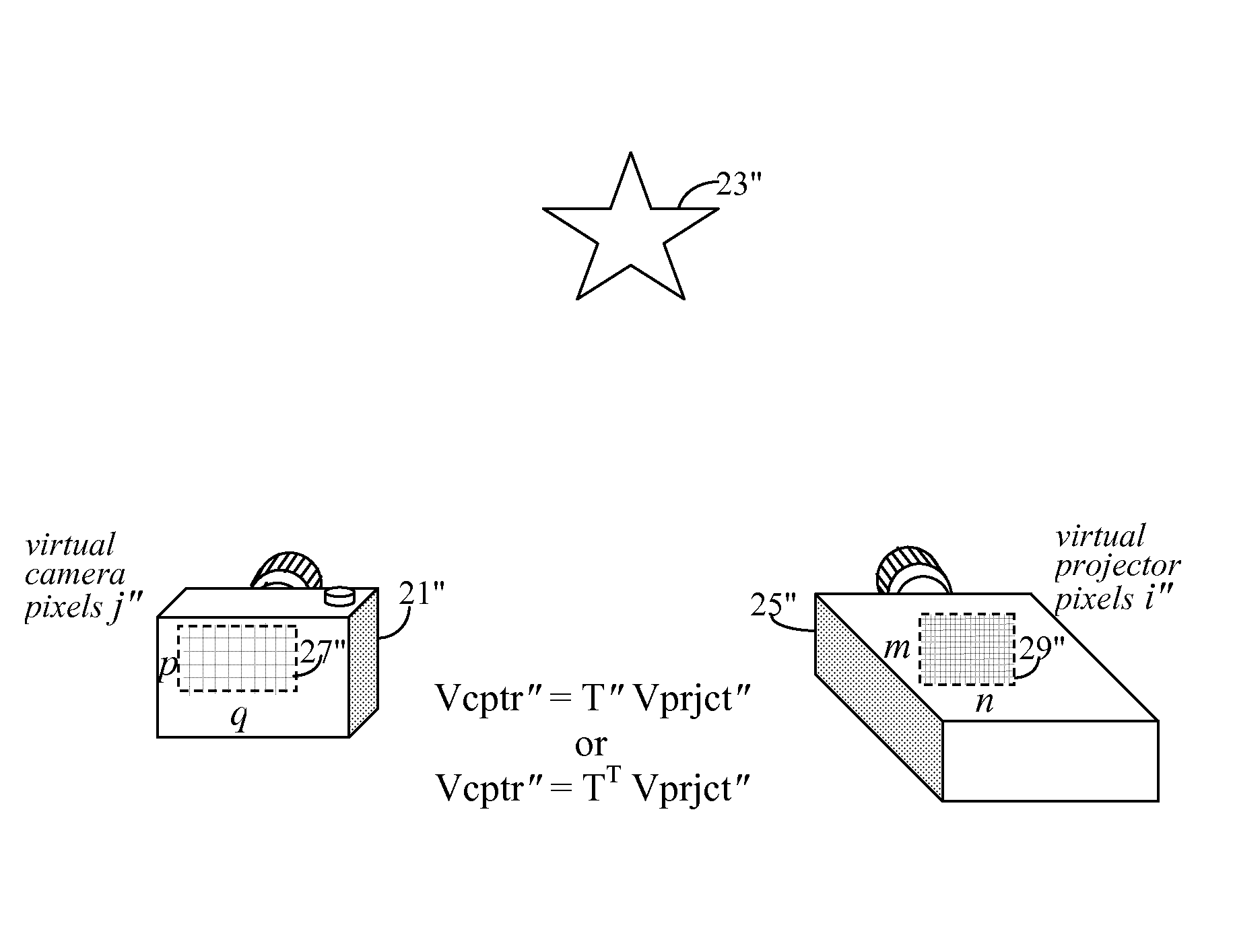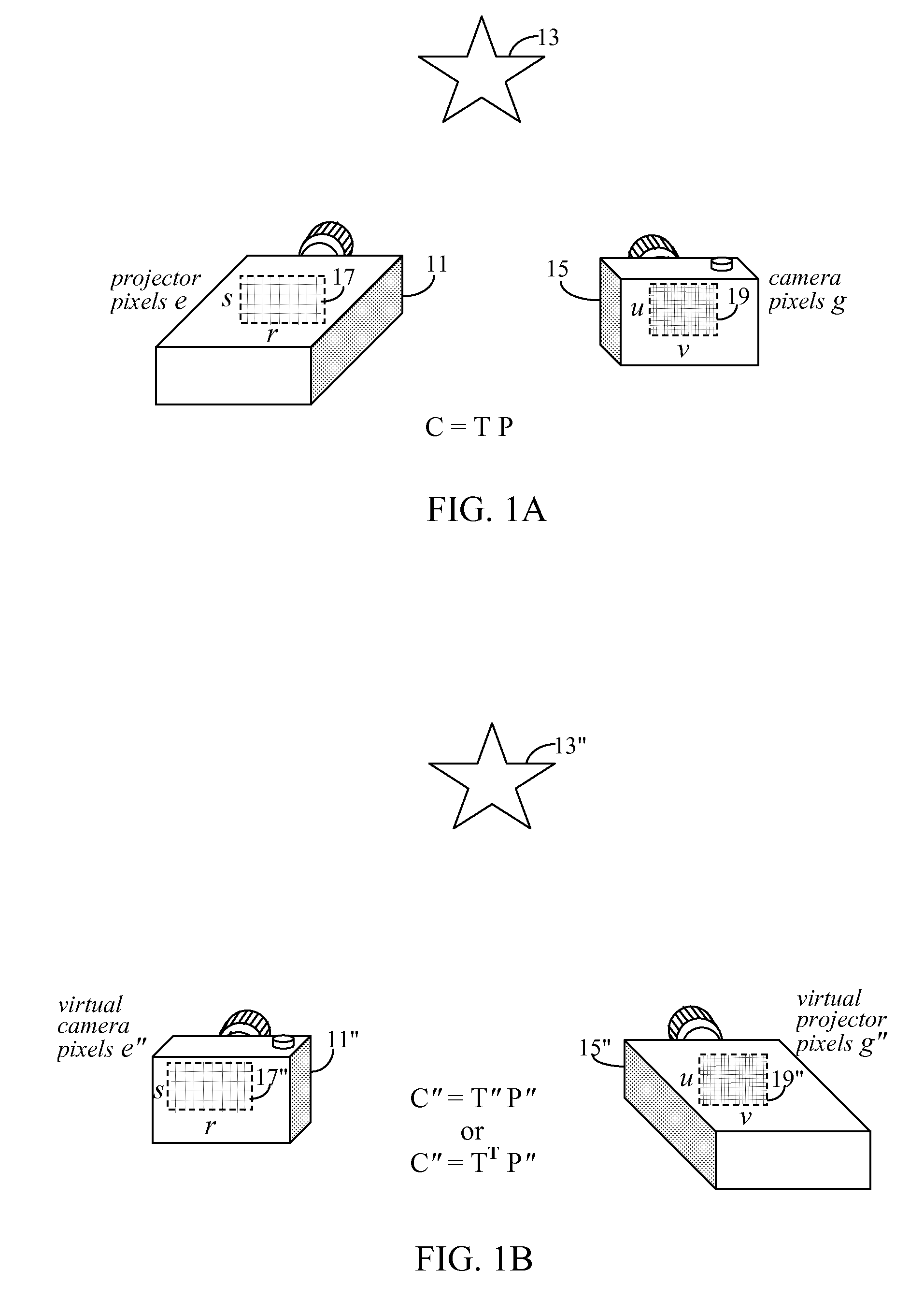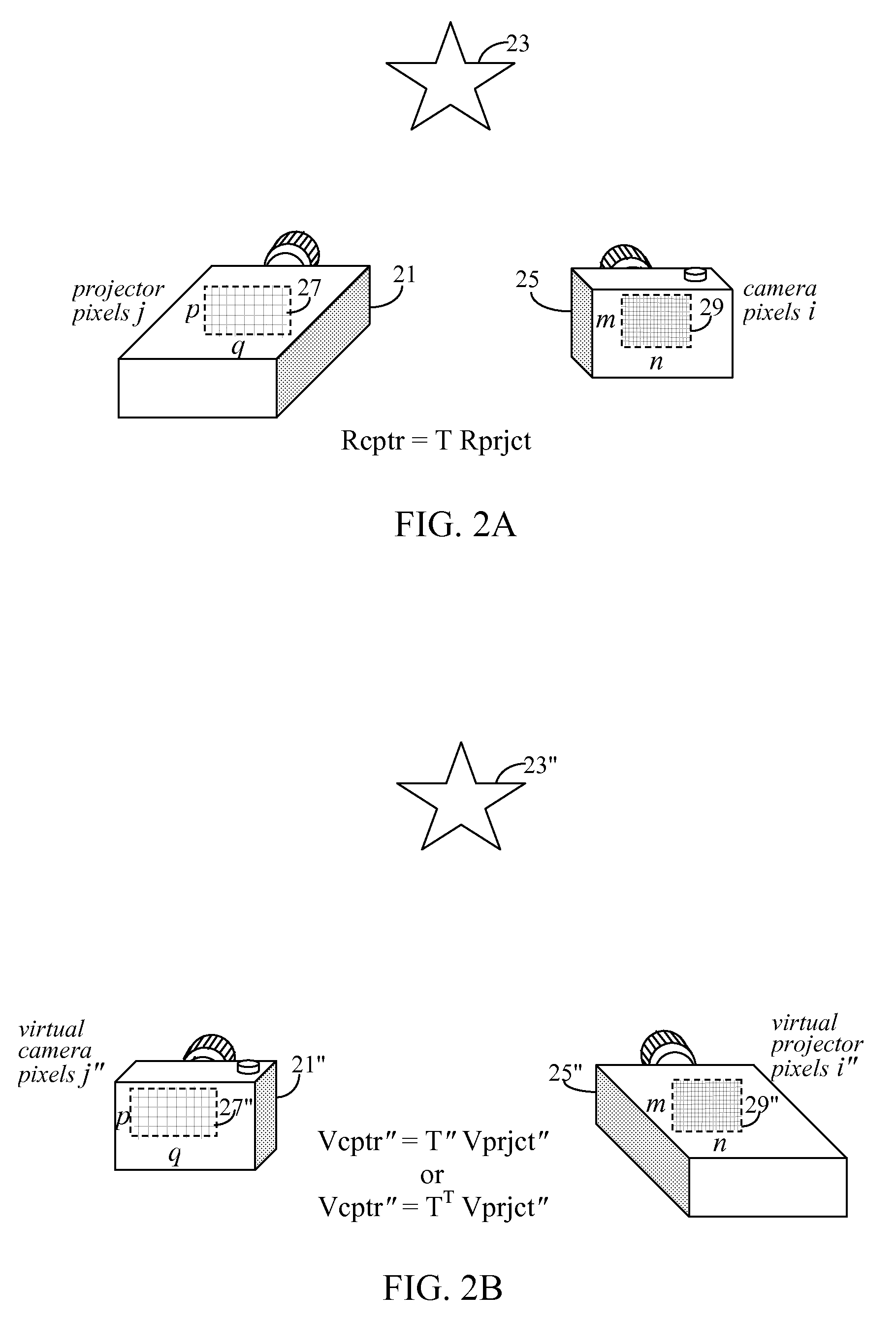Small memory footprint light transport matrix capture
a technology of light transport matrix and small memory footprint, which is applied in the field of small memory footprint light transport matrix capture, can solve the problems of limited application to non-specialized fields, difficult to adjust a projection to compensate for projection distortion, and high computational cost, so as to simplify the generation of transport matrix t, simplify the implementation, and simplify the effect of light transport matrix
- Summary
- Abstract
- Description
- Claims
- Application Information
AI Technical Summary
Benefits of technology
Problems solved by technology
Method used
Image
Examples
Embodiment Construction
[0112]In order to apply camera calibration techniques to projectors, one would require projectors to be able to capture images. That is, if projectors could capture images, then projector-camera systems could be treated like multi-camera systems, and standard camera calibration techniques (described above) might be used to calibrate projector-camera systems. In other words, if a projector could be treated as a pseudo-camera, then it could be calibrated along with a real camera in a manner similar to the camera calibration stage of the multi-camera system described above, and the “bootstrapping” projector calibration stage previously used for calibrating projector-camera systems might be eliminated.
[0113]With reference to FIG. 2A, an imaging setup in accord with the present invention may include a real projector 21 and a real camera 25. Real projector 21 is preferably a digital projector and has an imaging element including an imaging projection array (i.e. projector pixel array 27),...
PUM
 Login to View More
Login to View More Abstract
Description
Claims
Application Information
 Login to View More
Login to View More - R&D
- Intellectual Property
- Life Sciences
- Materials
- Tech Scout
- Unparalleled Data Quality
- Higher Quality Content
- 60% Fewer Hallucinations
Browse by: Latest US Patents, China's latest patents, Technical Efficacy Thesaurus, Application Domain, Technology Topic, Popular Technical Reports.
© 2025 PatSnap. All rights reserved.Legal|Privacy policy|Modern Slavery Act Transparency Statement|Sitemap|About US| Contact US: help@patsnap.com



